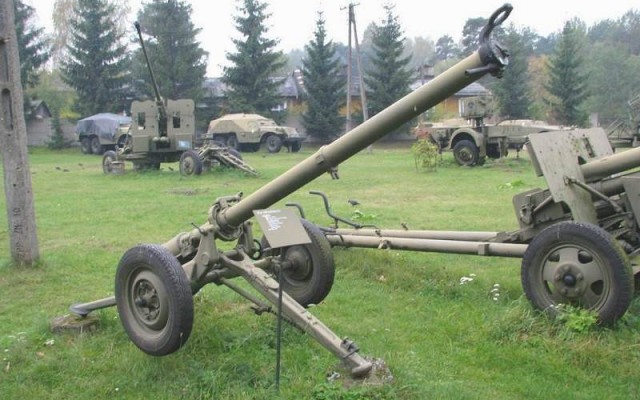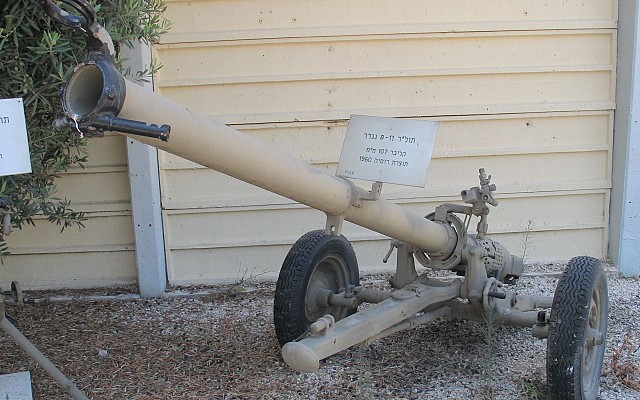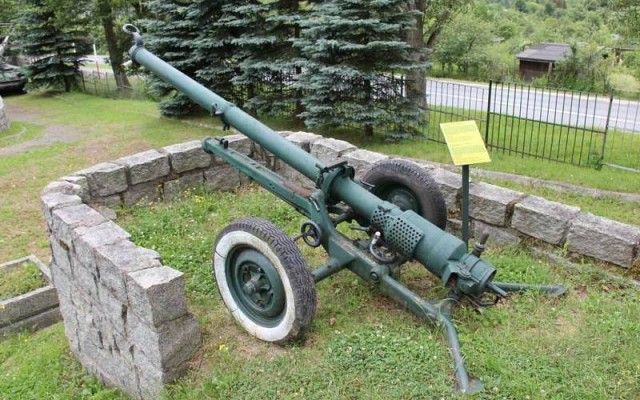107mm B-11
Overview
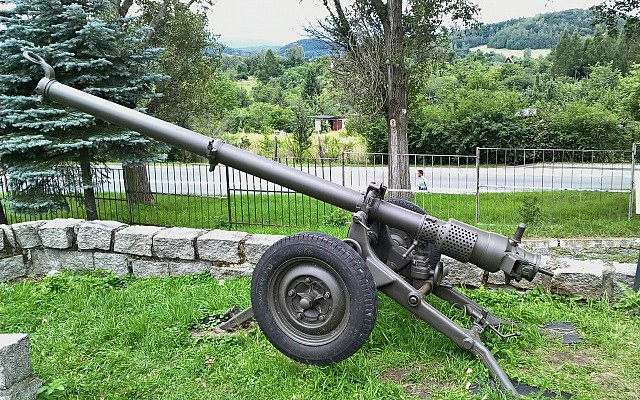
107mm B-11
Soviet produced 107mm B-11 recoilless rifle on display at the Polish army museum.
Source: Zala -
© CC BY-SA 4.0
RG107 | Rückstoßfreie Geschütz 107 (East German service)
Description
Introduction
The B-11 is an early Cold War era recoilless rifle of Soviet origin. It was developed in the early 1950's for used by motorized infantry and airborne troops. It is a dual role weapon intended for both anti-tank use and engaging infantry positions and crew served weapons.
Design
The B-11 is an up-scaled version of the 82mm B-10 recoilless rifle. The larger caliber makes for a more potent shaped charge warhead and extends the practical range. Furthermore it fires a larger shell in the indirect fire mode. The B-11 is a breech loaded weapon that is normally fired from its tripod. A direct fire and indirect fire sight are fitted.
Firepower
The BK-883 HEAT round has an effective range of about 450 meters and penetrates about 380 mm RHA. This was enough to penetrate contemporary tanks, making it a far more reliable anti-tank weapon than the smaller caliber SPG-82 or B-10 recoilless rifles. For indirect fire the O-883 HE-fragmentation shell is used. This can be fired out to 6.65 km but with limited accuracy. It proved more useful in the stand-off engagement of infantry positions where the gun crew of the B-11 has line of sight.
Mobility
The B-11 has two road wheels and can be towed behind a vehicle. These include the GAZ-69 4x4 light truck and ZiS-151 and ZiL-157 6x6 medium trucks. These vehicles also transport the crew and the ammunition. A towing eye on the muzzle allows it to be quickly attached to a towing vehicle. It takes about a minute to set up the B-11 on its tripod. In an emergency it can be fired of its wheels with reduced effectiveness. The crew can manhandle the B-11 over short distances in the field. It can also be disassembled in three major parts for transportation by pack animals.
Users
The B-11 was adopted in quantity in Soviet service for use by motorized infantry and VDV airborne forces. After about a decade it was being replaced in service by anti-tank guided missiles for the anti-tank role and by howitzers such as the D-30 for more effective indirect fire. The B-11 was exported to various Warsaw Pact nations and Soviet allies. Small numbers remain in service in third world nations and conflict areas today.
Details
Media
Related articles
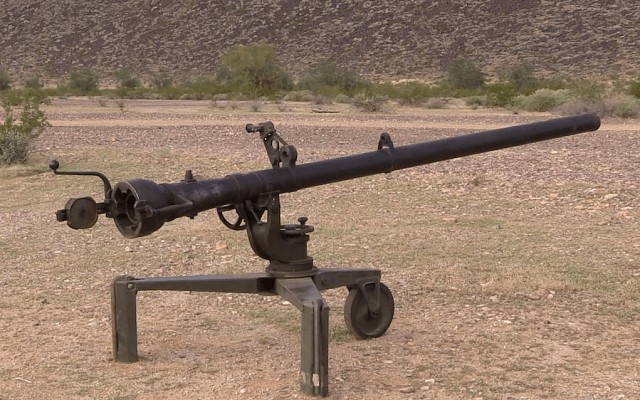
106mm M40
The M40 Recoilless Rifle can be considered the American counterpart of the B-11. It has a roughly similar size and performance but weighs less.

82mm B-10
The 82mm B-10 is a smaller counterpart to the 107mm B-11. These recoilless rifles were introduced in the same year.
